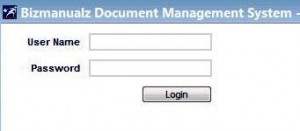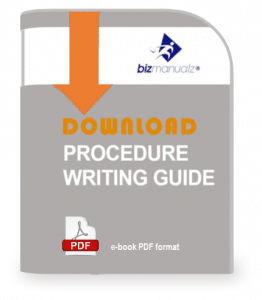What Are the 10 Best Reasons for Writing Procedures?

Do you know the 10 best reasons for writing procedures? “Because we HAVE to!” is one Reason for Writing Procedures, though it’s not the best one. (“What do you mean, ‘not the best one’? The law says we need written procedures to be in compliance. If we’re not in compliance, we lose business.”)
Believe it or not, there are many excellent reasons to write procedures, and complying with regulations or standards, while it may seem the most important reason (because of the potential for fines and other penalties), is actually pretty far down the list.
10 Best Reasons for Writing Procedures
- Documenting and analyzing process results in order to improve process control (in other words, you know if a process is getting better or worse by taking measurements and comparing them);
- Communicating how you measure the effectiveness of a process (i.e., what your expectations are for the process (pieces per hour, zero defects, etc.));
- Decreasing process error rates (moving the process closer to Six Sigma performance level);
- Making it easier to replicate a process (that is, regardless of who’s working at it or when, the process remains the same);
- Retaining and transferring valuable knowledge;
- Documenting — and sharing — risks, hazards, and “lessons learned” — to reduce risks;
- Reducing the time you need to train (or retrain) workers;
- Improving the consistency of process results (another way to put it is “your customers don’t like surprises”);
- Simplifying access to — and understanding what is — important information; and
- Solidifying the foundation for your company’s growth.
Does Writing Procedures Demonstrate Control?
Many believe that procedures are the most important method of creating internal control. Then a lot of procedures are written – documenting process after process, whether for processes on the manufacturing floor or in the office (as the Sarbanes-Oxley Act requires for Financial and Accounting processes).
The problem is that poorly written and unused procedures provide very poor control, if any. How can a procedure that few people know about, and even fewer people use, provide control? It doesn’t.
However, well-written procedures that are also well communicated can be an important element in achieving consistent results (the typical goal of process control). But it is not the only way, and procedures are really best if used in conjunction with other control methods.
What if, along with procedures (or even in lieu of procedures) you conduct thorough and regular training for those involved in the process (and create training records to provide evidence of the training). And you also create SMART objectives for the process, and create records of key process results that align with the process objectives, along with visual tracking of results against objectives.
Wouldn’t proper training of personnel and tracking of actual process results against desired results (objectives) demonstrate control better than an unused procedure sitting in a drawer somewhere?
Simple Company Procedures
If the activity is fairly simple:
- There might be more than one way to do it, but none of them is longer than 6-7 steps
- It doesn’t require a lot of parts, tools, or prep time; and/or
- It’s not being done by a broad, diverse group of people
Many tasks are simple and straightforward so that an employee can be trained in minutes just by showing them how it’s done and letting them do the task repeatedly until they have it right.
You don’t need to write a work instruction (or a procedure) when:
- It would take less time to show someone than to write and test a work instruction; and/or
- The risk of failure is minimal (i.e., the probability of failure is small-to-nonexistent, as is its impact).
Business Process Procedures Reduce Risk
If you can’t afford the risk, either don’t do it or reduce your risk by documenting the process.
What are procedures?
Which brings us to procedures. Procedures are documented processes. The processes may be so complex that they can’t be reduced to a set of work instructions. A process may also consist of a number of processes. The process may cross departmental and/or hierarchical boundaries.
Communicate such concepts clearly and effectively in your procedures
- Purpose;
- Roles and responsibilities
- Scope
- The company’s policy on that subject
Writing Procedures: Ensure They’re Mistake-Proof
If you’re not communicating these points to your intended audience — if your message is being lost in translation — here are some things you can do to help:
 1. Add graphics to business procedures
1. Add graphics to business procedures
If I tell you, “Enter your user name and password and hit [Login]”, you probably know what that means, regardless of what application I’m talking about. But, what if you don’t?
Procedures are primarily designed to train (and retrain) people to perform complex processes and/or processes they don’t perform often. If you’re unfamiliar with logging in, it’d be helpful to you if I showed you what that looks like, wouldn’t it?
2. Use active voice when writing procedures
It’s more direct. It leaves less room for interpretation. For example, which of the following makes more sense:
- “An internal audit program shall be prepared annually by the lead Quality Auditor before the end of the current calendar year”?, or
- “The lead Quality Auditor shall prepare next year’s interal audit program before the end of the current calendar year”?
3. Write procedures as if you’re talking to one person
Picture yourself trying to teach a procedure to someone who’s not at all familiar with it or the company, like a new hire.
That’s the procedure’s audience and that’s what you should keep in mind when writing procedures — as if it’s just you and the trainee at the computer, machine, etc.
4. Tell your procedure reader audience “why”
The new hire in #3, above, should have been through a general company orientation — the company’s lines of business, how long it’s been in business, the vision and mission statements, company objectives, etc. — by now. They need all that background to understand how this procedure fits into the grand scheme (that is, how the process helps the company achieve its objectives, or “why they’re learning the procedure”).
If you don’t tell them why, they’re liable to ask themselves at some point, “Why am I doing this?” You may not agree with — or like — the answers they come up with on their own. This may be counterproductive.
5. Simplify, simplify, and simplify your procedures
My favorite example is the Swiss Army knife. The more expensive variations have nearly every tool you might possibly need. Capable of doing a hundred things, it does none of them well. I’ll take a tool box with me on a camping trip; you bring your Swiss Army knife.
Is my kit heavier? Yes! Is it stowable in the glove box? No! But will your saw cut anything larger or heavier than string cheese? Will your knife cut nylon rope? Will your hammer…wait…you don’t have one.
My point is when writing procedures you should keep them like your tools — simple, functional, and easy to use.
There are many reasons for writing procedures and many ways to make them easy to use. Remember these techniques when writing procedures and they will be simple and easy to use, which will improve your workforce’s productivity and morale.
















Leave a Reply